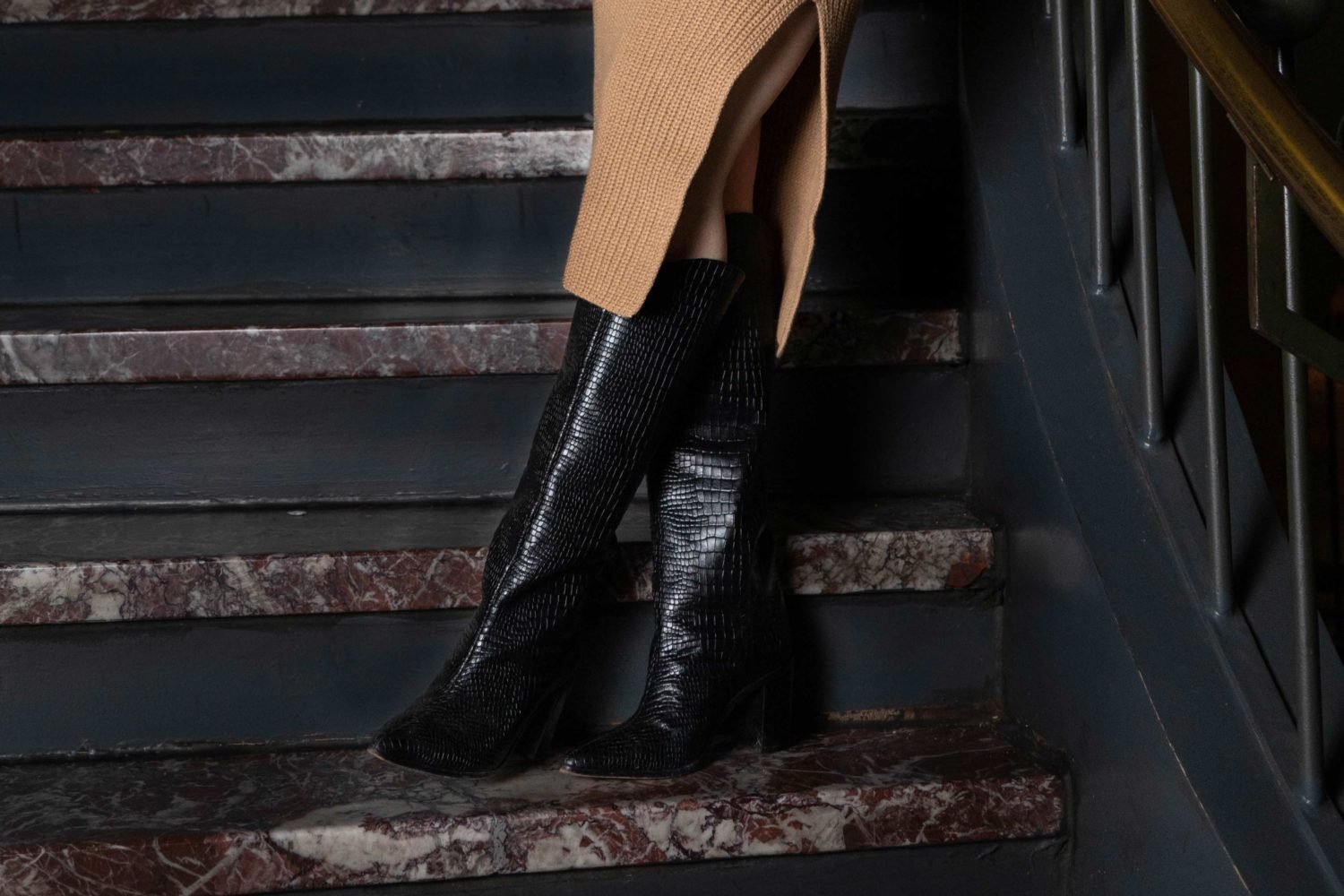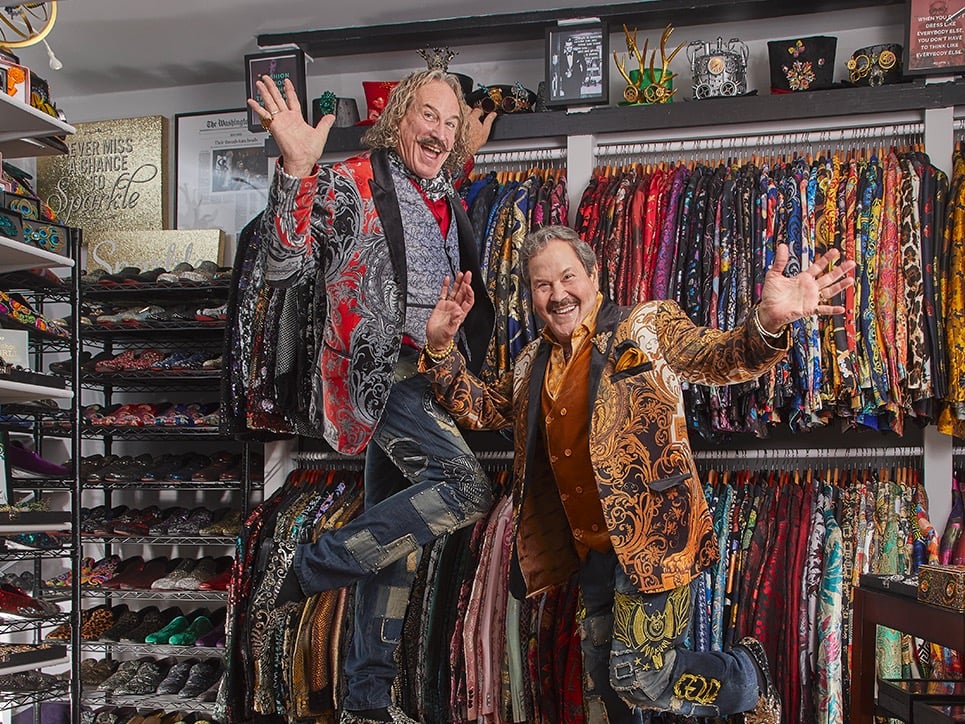“Your eyelids have really sagged. It makes you look older,” my friend Melba told me last April when we roomed together at a writer’s conference. She hadn’t seen me in a year. “It’s got to be affecting your vision,” she added, staring at me in the mirror as we both put on makeup. “I think you should see a doctor.”
I looked hard at myself. Did I really seem so different? At age 57 you don’t expect to look the way you did at 30. While I don’t want to look older than friends my age, having a few dings and sags, like any good almost-antique, had not troubled me.
“I think you should get your eyes done,” Melba said
“Girlfriend, are you crazy?” I remember exclaiming. I have nightmares in which I am blinded and unable to read. “Let some doctor use a knife next to my eyes? I couldn’t do it.”
After that, I started noticing the way my eyes looked—and how they didn’t seem to be working very well. In July, I didn’t see a car on my bumper and almost had an accident on Rockville Pike. Another day, I didn’t notice when my older son came up beside me while I stood at the stove, stirring spaghetti sauce. When he spoke, I launched myself and half a dozen tomatoes into orbit. A string of similar incidents was funny at first, then not so funny as I realized my peripheral vision was compromised.
Tests showed that the issue wasn’t glaucoma, which runs in my family, but those saggy eyelids. “No doubt whatever,” said Bethesda ophthalmologist Mary Catherine Fischer. She pulled out a fat book of before-and-after photos of men and women on whom she had performed blepharoplasty, an operation to remove excess skin and fat from the eyelids. Both plastic surgeons and ophthalmologists who specialize in eye surgery, as Fischer does, do this procedure.
All the “before” eyes looked like mine. Everybody looked better afterward. It struck me that they must have thought so, too: All of them were smiling.
In 2007, nearly 12 million people in this country went to a doctor, usually a plastic surgeon or a dermatologist, and said, “Change me.” According to the American Society for Aesthetic Plastic Surgery, last year the average cosmetic surgeon gave 352 Botox shots and 134 injections of fillers such as Juvéderm and Restylane, used a laser to rejuvenate the faces of 70 people, and removed unwanted hair from 129. When the doc wasn’t doing that, he or she was in the operating room doing 30 tummy tucks, 36 eyelid lifts, 78 breast augmentations, 23 breast lifts, 19 facelifts, 8 forehead lifts, and liposuction on 72 people.
Health insurance rarely pays for a cosmetic operation but will if there is a medical need. Dr. Fischer felt my insurance plan would cover the costs of fixing my upper lids. “But you’ll want to get those fat pads under your lower lids removed at the same time,” she said. I would have to pay for that surgery. The thought of spending the money gave me pause, given the way investments were tanking last fall.
“Would I look mismatched if I had surgery only on the top lids?” I asked. “Well,” Fischer said, “sometimes younger people get only the top done. You might like what you see in the mirror better if you did both.” In other words, yes.
Once I’d accepted that I needed eyelid surgery, I made a list of possible doctors. I was impressed with Dr. Fischer’s photo book and that she puts patients on an herbal pre- and postsurgical regime. But she operates using local anesthesia, and I knew I couldn’t hack surgery without going completely under.
I’d interviewed a number of local plastic surgeons for one article or another, and there were half a dozen whose skill I’ve admired through photos or on the faces of friends. That meant I could skip the first phase of selecting a surgeon: collecting names and looking at Web sites.
It’s tempting to sign on with the first doctor you consult. Don’t do it. Every surgeon will approach your case differently, and you will glean something useful from each. (I ended up taking one of the herbal remedies Dr. Fischer had mentioned, arnica, for faster healing.) Even if you do end up with the first doctor consulted, you won’t be sorry you took the time to confirm your choice.
I picked two names off my list and made appointments for free consultations, which many surgeons offer. Both doctors were as impressive as I’d remembered. Their office staffs were cheery. Still, a little song called “I Can’t Do This” kept playing in my head.
Finding the right surgeon tamped down the fear. On October 19, Dr. C. Coleman Brown of Chevy Chase operated on me at Sibley Hospital. Brown is a plastic surgeon specializing in cosmetic procedures. During a two‑hour‑plus operation, he cut the excess skin from my eyelids, then sewed them back together. He removed the poochy fat underneath my eyes through tiny incisions inside the lower lids. He also did some laser resurfacing on the skin beneath my eyes so that new, unwrinkled skin would grow back.
Young, socially tuned‑in friends had told me that Brown and Dr. James Bruno, with whom he practices, are rising stars on the cosmetic-surgery scene. While I wanted to talk with Brown and his partner for this story, I didn’t walk into his office thinking I’d ask him to operate. He wasn’t on my list. I was unconsciously restricting my “possibles” to doctors near my age.
Here’s what I’ve learned about choosing a cosmetic surgeon: Do it half for reasons that can be rationally judged, such as credentials and the safety of the operating facility, and half on instinct. It makes sense to pick a surgeon who is smart and well regarded by peers and who seems to have strong technical skills—as much as any layperson can tell, which is through recommendations and photos of past surgeries. Kindness is a plus.
Ideally, there also should be a simpatico connection: This person will alter the face you show the world. Inside yourself you’re asking: “If I let you operate on me, will I like what I see afterward?” With the right doctor, you hear a gut‑level “yes.”
As I talked with Brown, I liked the thoughtful, gently humorous way he explained his work. He seemed deliberate, unrushed. I already knew where he had studied and trained. After a while, I found myself thinking, “I trust him.” When he remarked that he enjoys operating on faces because “it demands not just skill but a certain elegance,” he had me.
His lips twitched when I asked him to please avoid dropping any sharp instruments into an eye, but all he said was “Some hesitation is normal.”
My direct costs were about $6,800: $2,000 to Dr. Brown for the lower lids, $2,000 for the laser resurfacing he thought advisable, and $2,800 for anesthesia and the operating-room team. Insurance covered another $4,000.
On the day of surgery, my husband drove me to Sibley around 11 am. By noon, I was in the operating room. The “cosmetic” half of cosmetic surgery is more fun than the “surgery” part. There I was, decked out in vibrating stockings to encourage blood circulation, my face painted with markers, a big light over the operating table shining in my eyes. As Samuel Johnson said about the prospect of being hanged, it all concentrates the mind wonderfully.
The surgery was under general anesthesia. The last thing I remember telling the nurses is “This isn’t like getting my legs waxed.”
Around 4 pm I woke up in the recovery room among nurses with soothing voices, feeling as though I’d swallowed a toad. By 6 pm I was home, and my husband was bringing me the first of many ice packs for my eyes.
There was no real pain, but family members winced when they looked at me. Oozing flesh under my eyes, bruises, swelling, the ends of black stitches poking out here and there—it’s not a good look. I was working from home within a week and back in the world in two, rendered presentable by sunglasses and heavy makeup.
Most of the 241,000 Americans who had this operation last year looked pretty good in a month, even without makeup. I did not. After blepharoplasty, it can take up to a year for all swelling to vanish and the incision scars to settle into the eyelid crease.
Three months after surgery, Dr. Brown could still point to subtle swelling. There’s faint, sunburnlike redness under my eyes and a bit of bruising above them, which I disguise by wearing far too much green and purple eye shadow for a woman my age. Putting it on makes me smile. My Goth look would be even more fun if people would shoot me disapproving stares, but hardly anybody cooperates. As Mama once said, you always notice yourself more than anyone else does.
Because I have the fair skin that comes with being very blond or redheaded, Dr. Brown predicts that my scars will eventually be virtually invisible. My peripheral vision is perfect again, and I’ve regained vision directly ahead and just above my line of sight, which I hadn’t noticed losing until it was back. Thankfully, I didn’t end up with that startled look you see sometimes in men and women who have “had a little something done.”
“Your eyes look the way they did when I first met you,” my husband says. Love has mangled his memory.
In truth, my eyes have never looked this good. When I pass a mirror, I stare at myself. I don’t look like me anymore. I look better than me.
This article first appeared in the February 2009 issue of The Washingtonian. For more articles from that issue, click here.



















